6 Home Remedies For Repairing Heat Damaged Hair + Prevention
Leave your worries behind because these hacks can help you manage your heat-damaged hair easily.

Image: Shutterstock
Heat-damaged hair is dry, dull, and dehydrated. You may have lost the luster of your hair, and now, while it is still manageable and rough, it is easily tangled and tends to break easier than before.
Our hair is precious to us, and we do not want to damage it. However, sometimes it is hard to resist the temptation to use the heat tools to achieve the perfect hairstyle. These tools strip your hair of moisture and leave it dry and brittle. In your quest for the hair of your dreams, you will find your hair now stubbornly resists your efforts.
If you face similar issues, we have solutions. Keep reading to learn some effective hair tips to fix heat-damaged hair. However, before that, understand why and how heat damages your hair. Scroll down to learn more.
In This Article
How Does Heat Damage Your Hair?

The human hair shaft has a fascinating internal structure. It consists of three distinct layers called the cortex, cuticle, and medulla.
The medulla – referred to as the hair’s pith or marrow – is not substantially affected by heat. However, cosmetic procedures and heat can break down the other two layers of the hair and change its natural physical characteristics considerably.
Want to know how? Let’s delve into the science:
- The cuticle is the hair’s outermost protective layer. The protein scales of the cuticle resemble the shingles on a roof. They overlap and help lock in moisture within the hair strand.
- When you subject your hair to excessive heat styling or chemical hair treatments such as bleaching, coloring, and perming, the shingle-like cells of the cuticle layer are raised.
- Hair with raised cuticles has a higher probability of damage as it allows moisture to escape and harmful solutions to enter it.
- Once the cuticle of the hair cracks or lifts, the cortex or the middle layer of the hair becomes completely exposed.
- The cortex is the layer that gives the hair its strength, elasticity, and color. When the cortex of the hair is damaged, it becomes extremely porous.
- The hair now becomes unable to retain moisture, looks choppy, and may even break off easily.
So, just like you religiously slather on sunscreen before stepping out, you need to know that heat-styling tools and that big ball of fire in the sky have equally damaging effects on your hair.
Now that we have told you how heat can damage hair, it’s time for you to know what heat damaged hair looks like.
Key Takeaways
- Heat-damaged hair showcases symptoms like extreme dryness, easy breakage, split ends, and frizziness.
- Hair styling tools are the main cause behind heat-damaged locks and contribute to the problem by stripping away natural hair moisture.
- Styling tools cause raised hair cuticles, increasing the risk of hair damage.
- Opt for natural hair remedies to combat heat-damaged hair, such as switching to natural shampoo, applying DIY hair masks, and using a cool-mist humidifier.
Signs Of Heat-Damaged Hair
- Split Ends
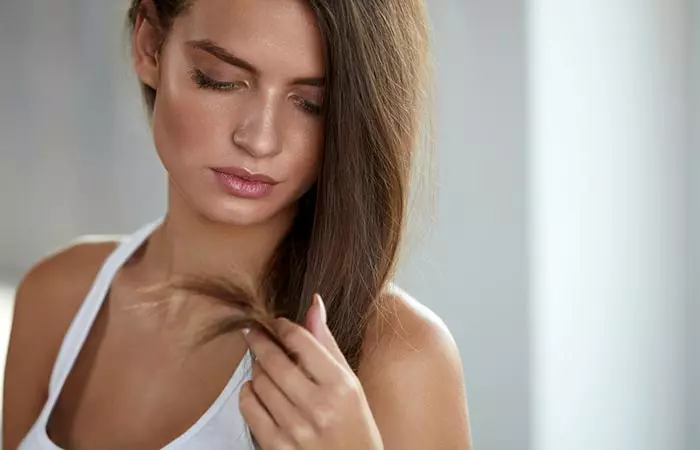
If you love your heat-styling tools, you will most likely end up with broken, frayed ends. Split ends are one of the most telltale signs of heat damage. Sadly, split ends or dry hair ends cannot be reversed, and the only solution is to cut them off.
- Unmanageable Hair
Heat-damaged natural hair has a stiffer texture and is more difficult to style. The daily wear and tear also starts making your hair look unruly and dry.
- Hair Breakage And Shedding

Rogue hair and flyaways are bad enough, but another troublesome symptom of heat-damaged hair is breakage and shedding. Heat styling can make your hair brittle and more prone to breakage.
Strong heat also makes the hair shaft weak and fragile, thus triggering hair loss and thinning. So, if you are losing a lot of hair, your heat-styling tools could be causing it.
- Overly Dry Hair
Dryness is one of the more obvious symptoms of heat-damaged hair. Excess heat can strip your hair of all its moisture, leaving it brittle and dry.
So if you notice that your hair feels rough, stringy, and dry even after moisturizing it daily, it could be a sign of heat damage.
- Tangles And Knots
Broken, frizzy, scraggly ends are characteristic of heat- and sun-damaged hair. When hair loses its natural sheen and elasticity, it tends to mat together and become a tangled mess.
- Dull Hair
Fried hair looks dull and lifeless. This is because damaged hair fibers cause light to scatter instead of bounce back, giving it a somewhat faded, lusterless appearance. You may know how to treat fried hair with the help of hair masks and suitable shampoo to get your healthy hair back.
- Fading Hair Color
Notice that your hair color is washing out fast? You can blame it on straightening, curling, blow-drying, and chemical treatments! If your hair has been severely damaged, it is not going to retain color.
Cutting down on heat styling can go a long way in eliminating the resulting split ends and damage. But, you might find it challenging to completely reverse the signs of extensive heat damage. Fortunately, you can make your hair more manageable with the following natural remedies for burnt hair.
Repairing Heat-Damaged Hair: All-Natural At-Home Remedies
The global hair industry is a billion-dollar business. So, it should come as no surprise that millions of hair products out there promise to cure your damaged hair woes.
But before you pile on those shampoos, hair sprays, serums, creams, and gels, here are some all-natural remedies that can help repair your heat-damaged hair.
1. Try An Oil Soak
An oil soak is a perfect solution for helping your hair regain its natural body and luster. It reinforces your hair and helps restore its protective outer layer.
But if you decide to make oil soak a part of your hair care routine, you must pick out the right nourishing oils. Plant oils such as coconut oil, Ucuuba butter, olive oil, and jojoba oil are recommended for dry, damaged hair.
Bri, a natural hair vlogger, shared her journey of recovering from heat-damaged hair on her channel and emphasized the importance of oil treatments for deep conditioning. She said,“With oil treatments, I used things like castor oil, coconut oil, like all different kinds of oils, and that really helped a lot for my hair; bringing the moisture, strengthening, and actually thickening, and it grew a lot more (i).”
On the other hand, sunflower oil and mineral oils only have a film effect, as pointed out by a study (1). These oils just superficially coat your hair without penetrating it. Thus, they do not have any beneficial effect on your tresses.
You can treat your scalp with oil and keep it moisturized with the following steps:
- Massage your head with a good plant oil for about 15 to 20 minutes.
- Cover your oiled hair with a towel or soft cotton cloth dipped in hot water.
- Leave it on for an hour before washing your hair with a mild shampoo and conditioner.
The steam from the heated oil will open up your hair cuticles and allow the oils to penetrate deep into them. Thus, it leaves your hair adequately nourished.
2. Switch To Natural Shampoo
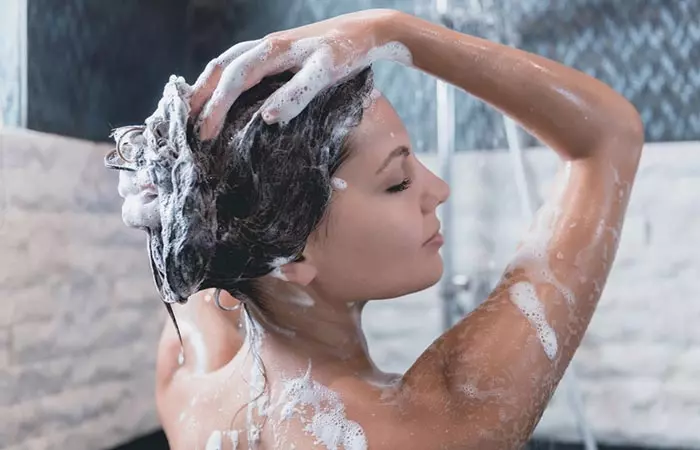
Most shampoos are loaded with surfactants like Sodium Lauryl Sulfate (SLS), formaldehyde, parabens, and synthetic fragrances. These chemicals can aggravate the problems related to damaged hair and harm it further.
Choose a natural shampoo that is free of all these surfactants and contains silica or biotin instead. Biotin is a hair-boosting ingredient that can stimulate follicle growth and improve hair health.
You can also whip up your own natural shampoo with a few simple ingredients like:
- 1/2 cup distilled water
- 1/2 liquid castile soap
- 1/2 cup aloe vera gel
- 10-12 drops of vitamin E oil
- 2 teaspoons vegetable glycerin
- A few drops of your favorite essential oils
Pour all the ingredients into a bottle and shake it to mix them thoroughly. Massage a dime-sized amount into your hair and let it sit for a couple of minutes before washing it off with cool water.
3. Use A Hair Mask
can soothe, nourish, and heal your hair. Moreover, you can make them with the ingredients in your pantry. Here are some ultra-nourishing hair masks you can use to banish any signs of damage on your hair:
- Banana And Olive Oil
Make your heat-damaged hair feel softer with this DIY hair restoration mask:
- Mash one ripe banana.
- Add about 8 to 10 drops of pure almond oil.
- Blend this together and massage into your hair.
- Leave it on for 15-20 minutes before washing it off with a mild shampoo.
- Egg And Yoghurt
Eggs are rich in protein, the building blocks of healthy hair. Yogurt contains milk fat with a generous dose of lactic acid. Both these ingredients work together wonderfully to rejuvenate dry, damaged hair (3).
Here’s how to make your own egg and yogurt hair mask:
- Whisk two eggs into half a cup of yogurt.
- Apply this mask throughout your hair and scalp.
- Let it soak in for 20-30 minutes.
- Wash it off with gentle shampoo and cool water. Make sure to not use warm or hot water as it can cook the eggs.
- Avocado And Olive Oil
Need a quick fix for those broken, sticking-up ends? This DIY hair mask adds some much-needed polish to your heat-treated hair ends and leaves them looking relatively healthier.
- Mash half an avocado.
- Mix it with half a cup of olive oil.
- Apply the mixture through your hair and scalp.
- Let it sit for 20-30 minutes before washing it off with a mild shampoo.
- Honey And Oil
Want to repair your heat-damaged hair without cutting it? Try honey! Honey is chock-full of antioxidants, nutrients, and – most importantly – protective proteins called keratin (3).
Add this honey-based solution to your hair care routine to repair the heat damage:
- Dilute honey with olive oil, coconut oil, milk, or apple cider vinegar.
- Pour this solution into a spray bottle.
- Mist it all over your hair and spread it evenly with your fingers.
- Wash it off after 20-30 minutes.
4. Rub In Some Epsom Salt
Magnesium sulfate or Epsom salt is not just good for those splinters and cracks. It can be used to treat burnt hair, too. Although research to back this is still insufficient, Epsom salt is said to improve hair and scalp health. It works as a useful hair activator for heat-damaged curly hair.
Here is a step-by-step guide to using Epsom salt for damaged, dry, and brittle hair:
- Pour a coin-sized dollop of conditioner into a bowl.
- Add an equal amount of Epsom salt. You can warm this mixture up to help it mix thoroughly.
- After shampooing your hair, use your fingertips to work this mixture into the scalp and roots.
- Leave it on for about 20 minutes before rinsing it off.
- Alternatively, if you have oily hair, mix Epsom salt into your shampoo instead of conditioner.
- Lather your hair with this solution and rinse thoroughly.
5. Rinse Your Hair With Tea
If your blow dryers and heating tools are causing you to shed clumps of hair, try rinsing your hair with tea. Trichology literature shows that the caffeine in tea has stimulatory effects on the hair follicles (4).
Try the following tea hair rinse for strong, shiny, and healthy hair:
- Boil tea leaves in water and let them steep for about 30 minutes.
- Cleanse your hair with shampoo.
- Generously spritz your hair with the rinse while your hair is still damp.
- Wrap it with a soft towel and leave it on for about 15-20 minutes.
- Rinse your hair with cold water.
 Quick Tip
Quick Tip6. Use A Cool-Mist Humidifier
Not many of us would think of the humble humidifier as a solution for our damaged hair woes. But investing in a good cool mist humidifier can help restore your heat-damaged hair.
A humidifier can keep more moisture in the air, especially during those harsh winter months, and prevent your hair from drying out excessively.
Using natural remedies to repair damaged hair may take some time to show results. Scroll down to find out how long it takes.
How Long Does It Take To Repair Heat-Damaged Hair?
The time it takes to repair heat-damaged hair depends on the extent of the damage and the chosen methods. Minor heat damage may improve with a few weeks of proper care, including using deep conditioning treatments, avoiding heat styling tools, and trimming split ends. For more severe damage, it could take several months to see noticeable improvement, as the damaged hair needs to grow out and be gradually replaced by healthier strands. Consistent and gentle care, along with patience, is key to restoring heat-damaged hair. A professional trichologist can provide tailored treatment for faster recovery.
Although home remedies can fix dry and damaged hair, preventing heat damage in the first place can keep your locks looking healthy. Here are some hair protection tips against intense heat damage.
Preventing Heat Damage: What You Should Do
- Shield Your Hair With Heat Protectant
Use a heat protectant to protect your tresses during hair styling processes that involve hot tools. Heat protectants work like sunscreen and minimize the damage to your hair from blow-drying, straightening, and curling.
- Use Warm And Cold Water
Always use warm and cold water to wash your hair. Warm water will allow the conditioner to seep in, and cold water will lock in the moisture and nutrients from the conditioner. On the other hand, hot water can be damaging and rob your hair of all its moisture.
- Minimize Heat Treatment
Throw out your blow dryer! Just allow your hair to air-dry. You can consider towel-drying your hair with a microfiber towel. Just make sure not to rub your hair too vigorously with it. If your hair is unmanageable without blow-drying, use the cool blast option instead.
- Get A Maintenance Trim
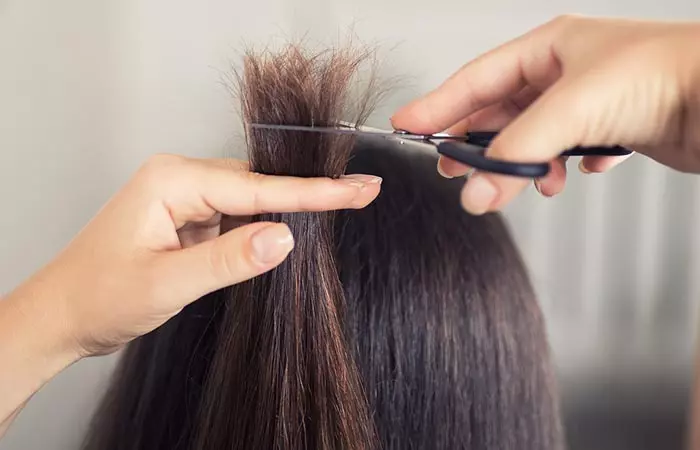
Get frequent trims, preferably every 3-4 months, to ensure a smooth hair repair process. Trimming will prevent split ends from traveling up and causing more damage.
- Pay Attention To Shampooing And Conditioning
Always focus on shampooing your scalp and conditioning your ends.
Shampoo is a detergent specifically formulated to remove the dirt, sebum, and product build-up that sits on the scalp. So, you don’t need to lather up your whole head with shampoo.
Conversely, your scalp does not need conditioner, but your ends do!
- Protect Your Hair From The Elements
Use an umbrella or a hat when you step out. If you let your hair fly, the harsh winds and the sun’s rays will sap the moisture out of it. Plus, you will accumulate more dirt on your head, further drying out and damaging your hair.
- Refrain From Combing Wet Hair
Avoid combing wet hair to lower its vulnerability to damage. Wet combing makes your hair increasingly prone to breakage. Try detangling your hair with your fingers in the shower to prevent breaking and pulling when it is dry.
- Invest In A Leave-In Conditioner
Use a high-quality leave-in conditioner to keep dryness and frizz away. Hair serum is also effective for moisturizing and repairing hair damaged from a flat iron.
 Quick Tip
Quick TipNow that we have shared everything about managing heat-damaged hair, let’s examine some common myths about it so you can begin your journey toward beautiful hair without any hesitation or doubt. Scroll down!
Common Myths About Heat-Damaged Hair
Here are a few of the most common myths about heat-damaged hair.
Myth: Heat protectants eliminate all damage.
Fact: They reduce harm but don’t provide complete protection.
Myth: You can fully repair heat-damaged hair.
Fact: Complete restoration of damaged hair is not possible, though treatments can improve its look.
Myth: Lower heat settings won’t cause damage.
Fact: Even low heat, when used often, can still damage hair over time.
Myth: Air drying always prevents damage.
Fact: If not managed properly, air drying can cause frizz and dryness.
Infographic: How To Identify Heat-Damaged Hair
Heat-damaged hair looks dull and lifeless. Regular use of hair styling tools, which emit heat, causes hair damage. They dry the hair out and damage the structure of hair proteins. This, in turn, leads to weak hair strands, which are more prone to breakage. Check out the infographic below to learn the signs of heat-damaged hair. Illustration: StyleCraze Design Team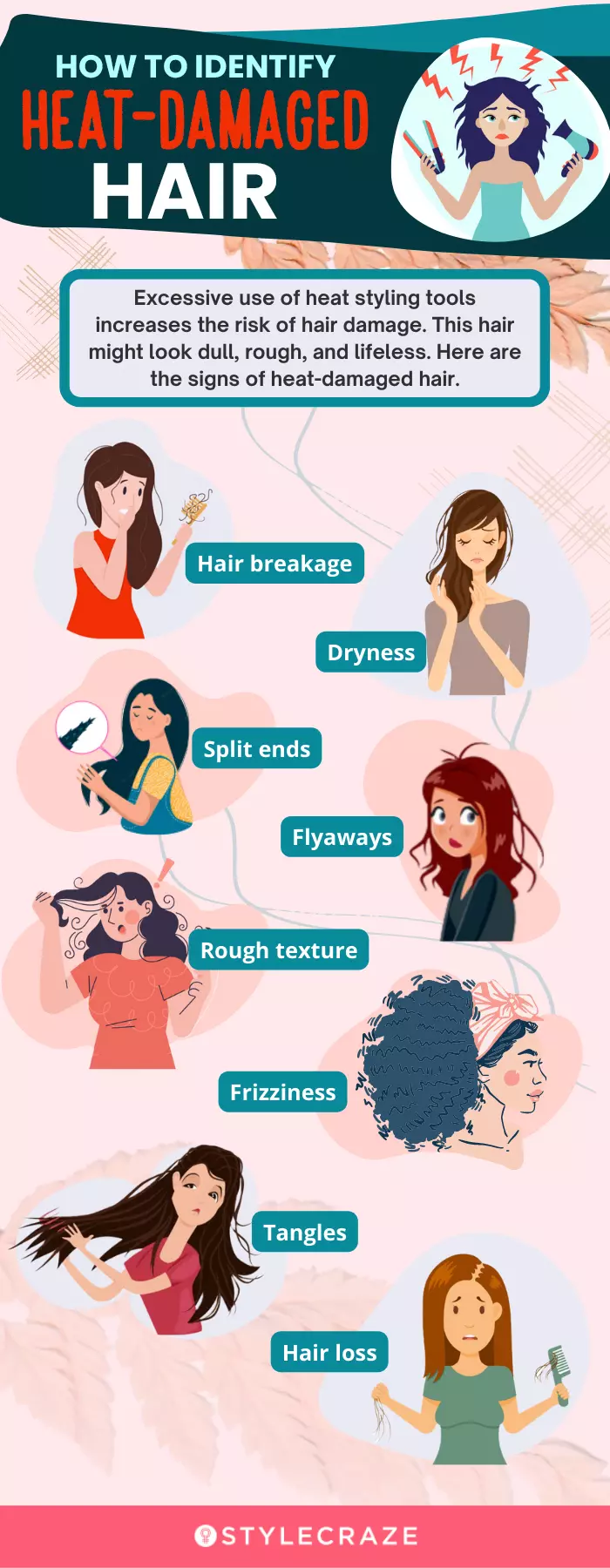
Heat-damaged hair is tough to manage and appears dull and dehydrated. Split ends, hair breakage, shedding, dry hair tangles, and fading hair color are signs of heat-damaged hair. Trying oil soaking, switching to natural shampoo, using a hair mask, rubbing Epsom salt, and rinsing hair with tea will help repair heat-damaged hair. Using a cool-mist humidifier also helps combat damage. In addition, following preventive tips like shielding the hair with a heat protectant, trimming hair, and minimizing heat treatment will help in minimizing heat damage.
Frequently Asked Questions
Can I apply multani mitti to hair overnight?
To keep your hair looking and feeling its best, it’s best to avoid leaving multani mitti on your hair overnight. Instead, try a shorter treatment to help improve its health and vitality.
Is it OK to use heat on the hair once a week?
While you can certainly use heat on your hair once a week, it’s best to be cautious and avoid excessive heat exposure to prevent damaging your lovely locks.
How long does heat damage last?
The lasting effects of heat damage on hair can vary depending on the severity of the damage. In the worst cases, cutting the damaged hair may be necessary to prevent permanent damage. However, with consistent hair care and the right products, it is possible to fully repair heat damage within a year.
References
Articles on StyleCraze are backed by verified information from peer-reviewed and academic research papers, reputed organizations, research institutions, and medical associations to ensure accuracy and relevance. Read our editorial policy to learn more.
- Hair cosmetics: an overview
www.ncbi.nlm.nih.gov/pmc/articles/PMC4387693/ - Ethnopharmacological survey of home remedies used for treatment of hair and scalp and their methods of preparation in the West Bank-Palestine.
www.ncbi.nlm.nih.gov/pmc/articles/PMC5499037/ - Therapeutic and prophylactic effects of crude honey on chronic seborrheic dermatitis and dandruff
pubmed.ncbi.nlm.nih.gov/11485891/ - Can beverages grow hair on bald heads?
www.ncbi.nlm.nih.gov/pmc/articles/PMC3358932/
Read full bio of Dr. Shruti Chavan
Read full bio of Arshiya Syeda
Read full bio of Ramona Sinha
Read full bio of Medha Deb






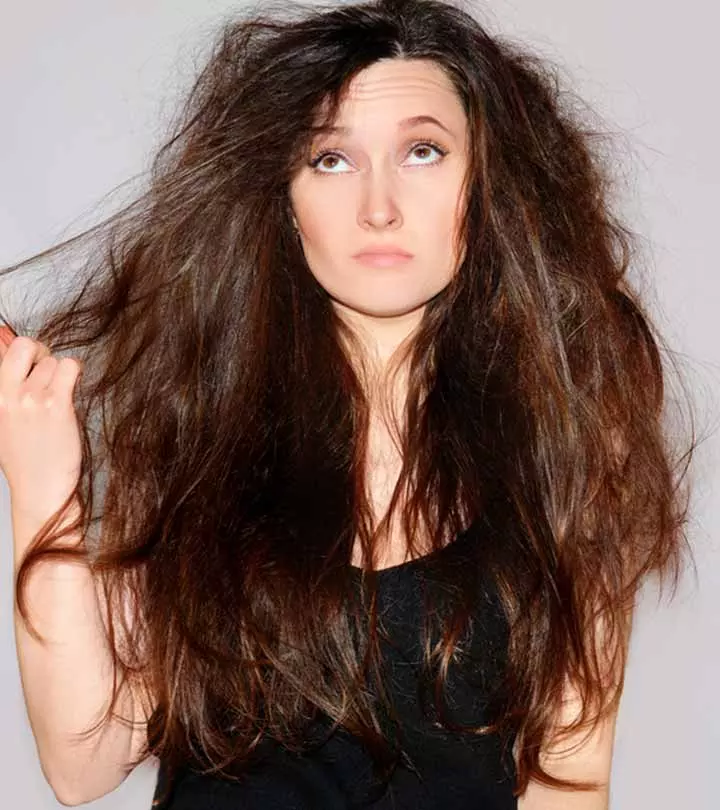
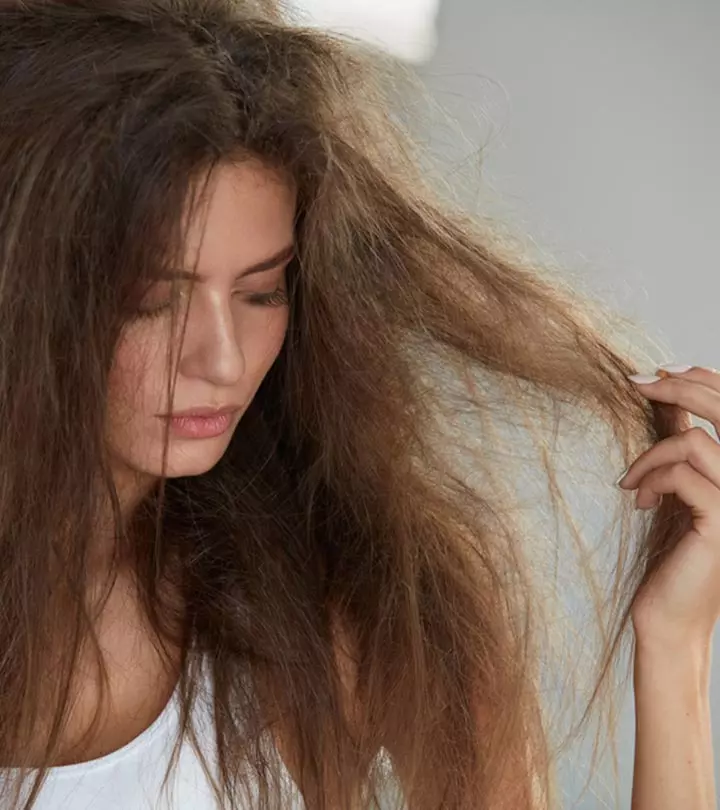
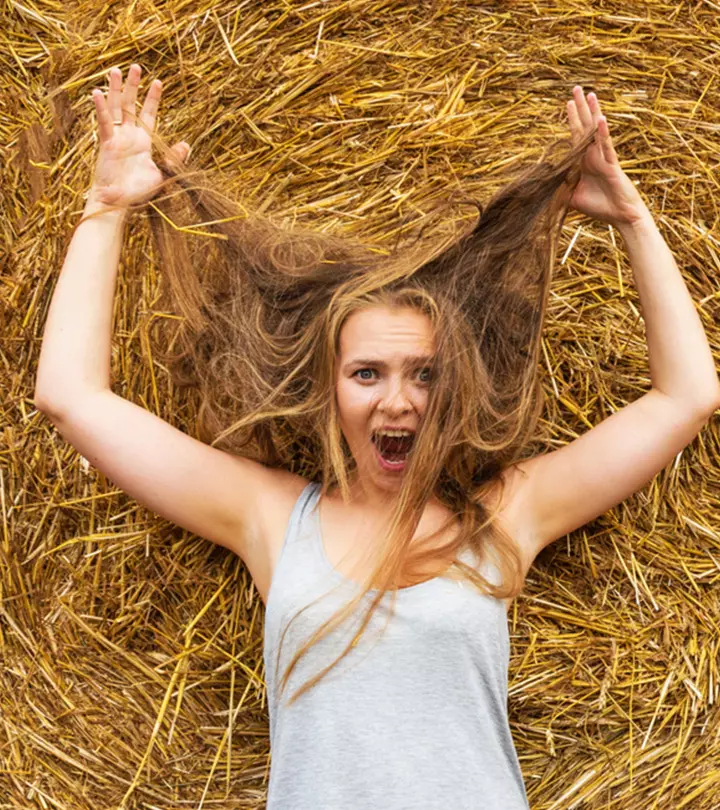

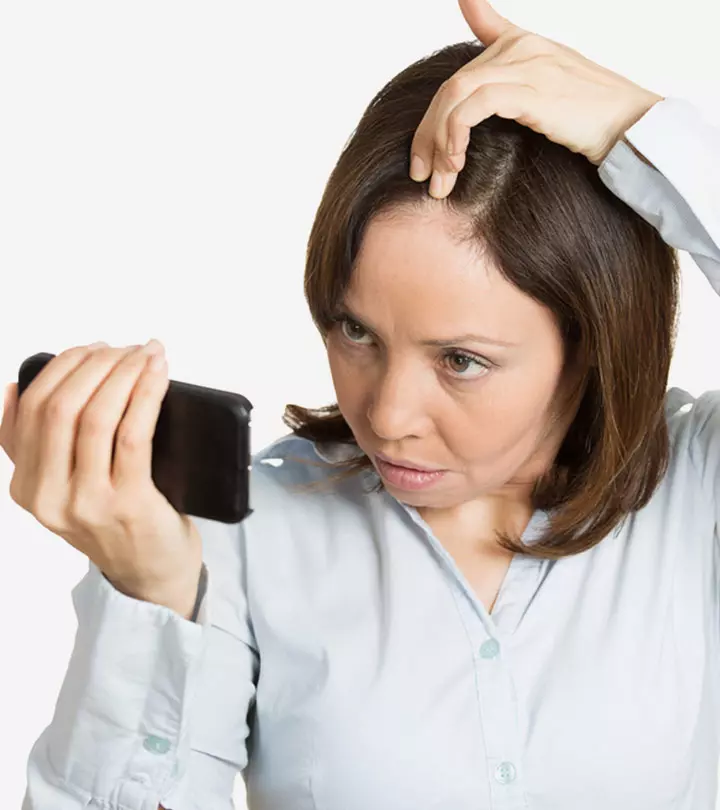
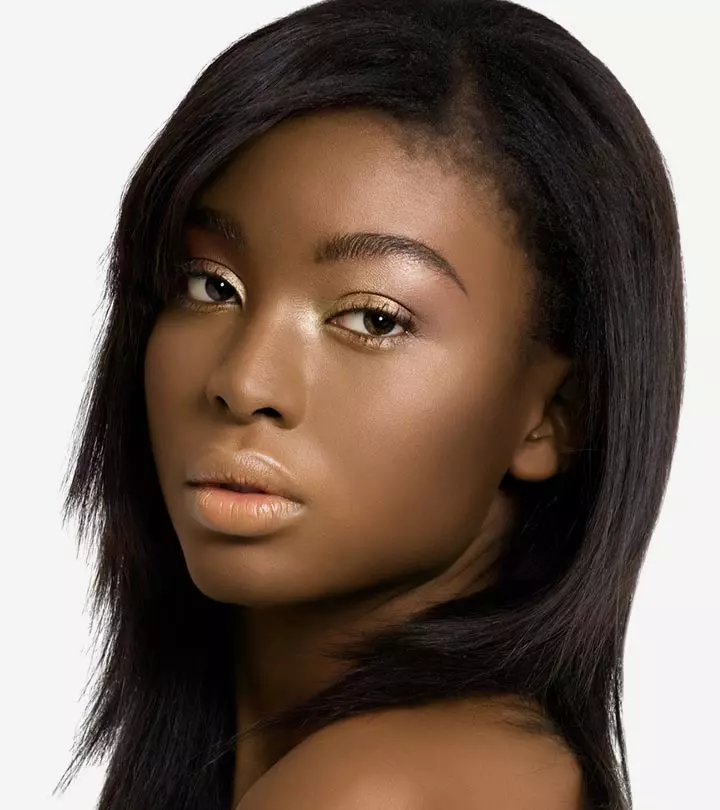
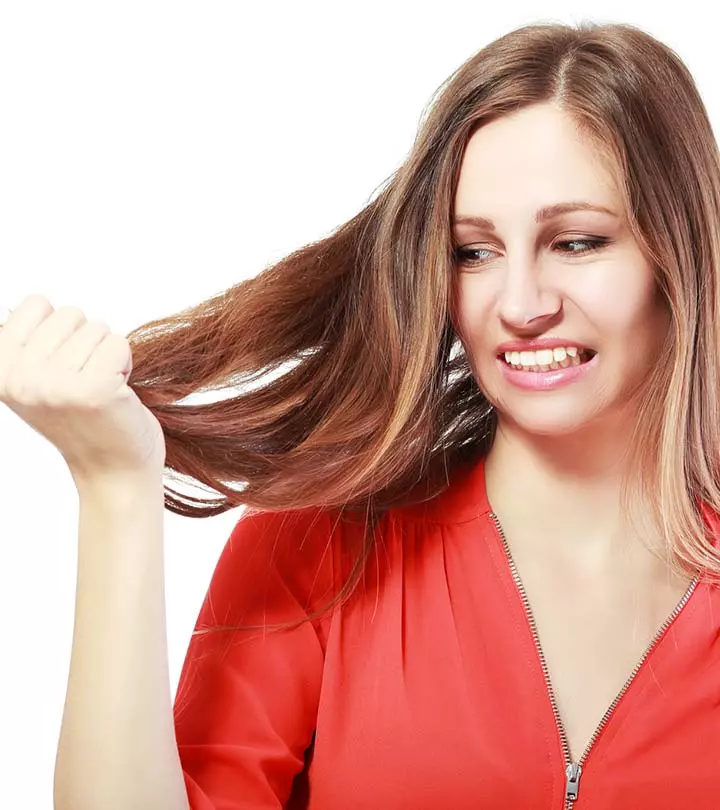
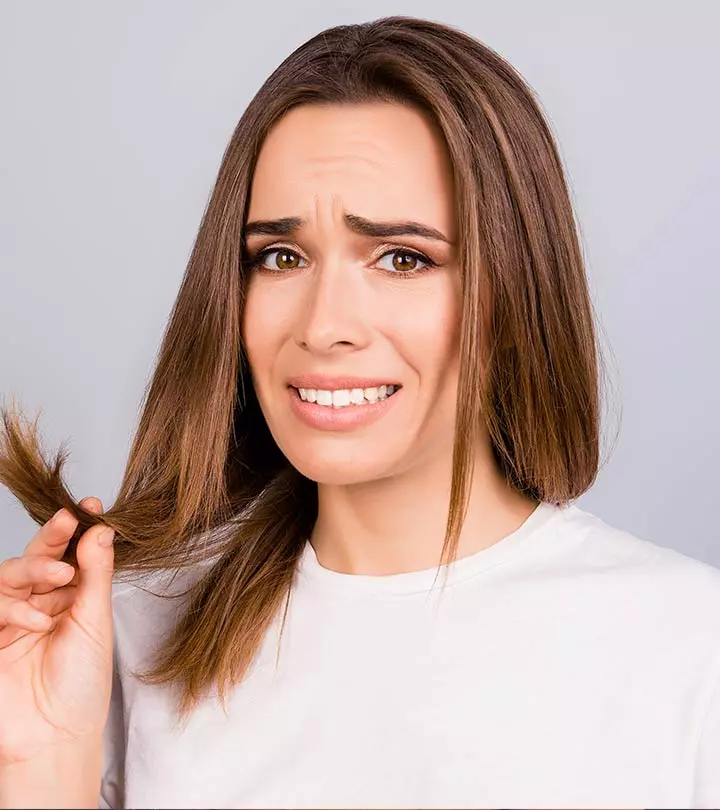
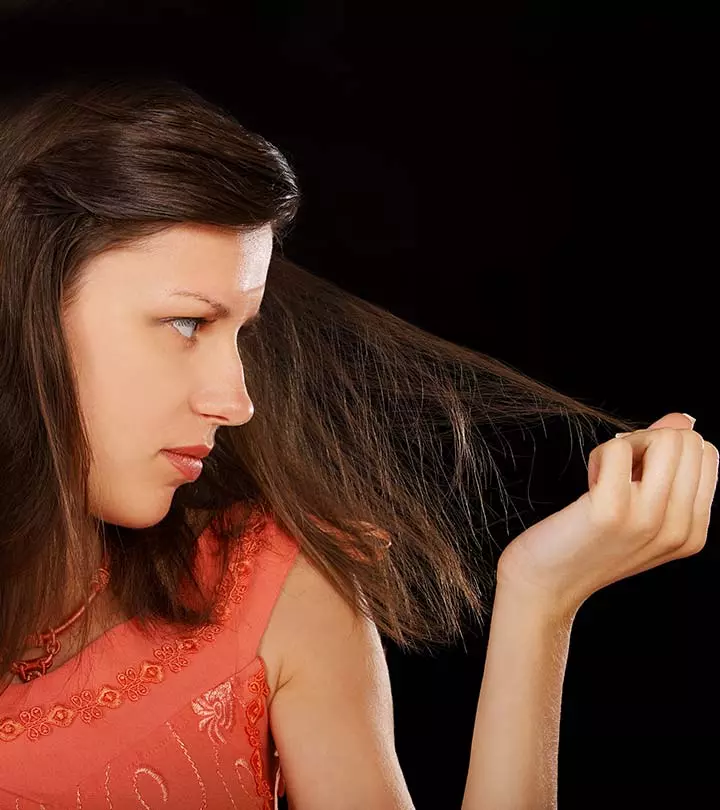
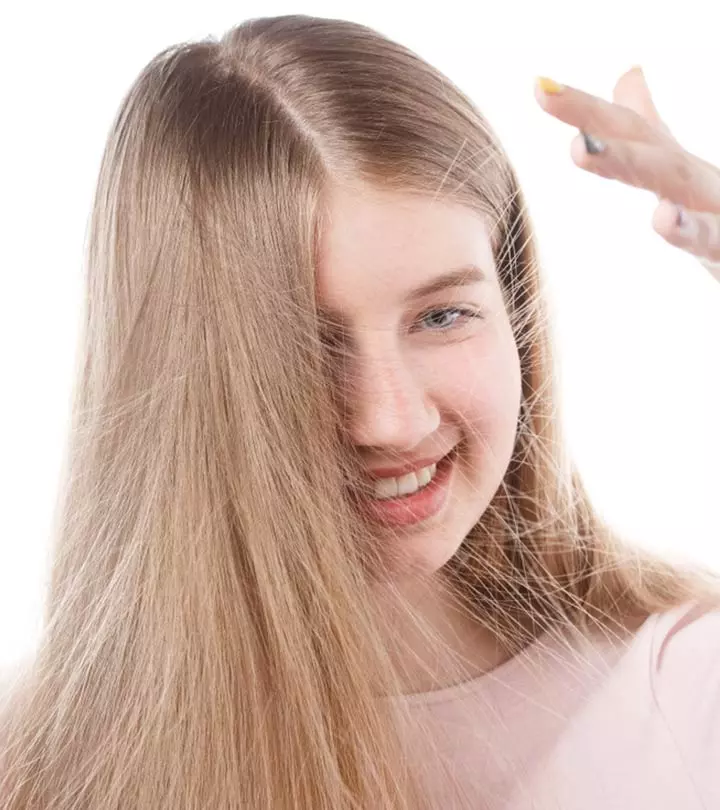

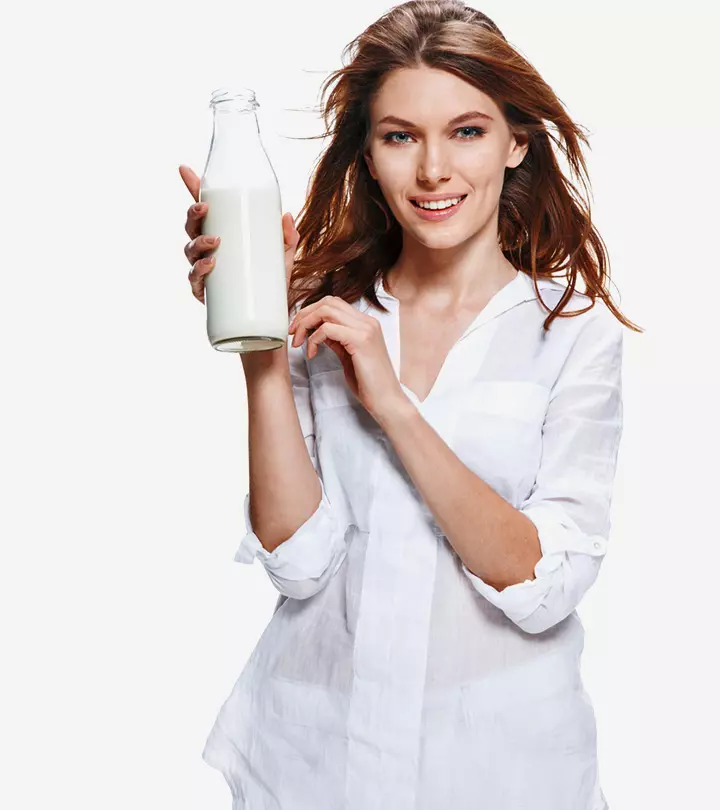
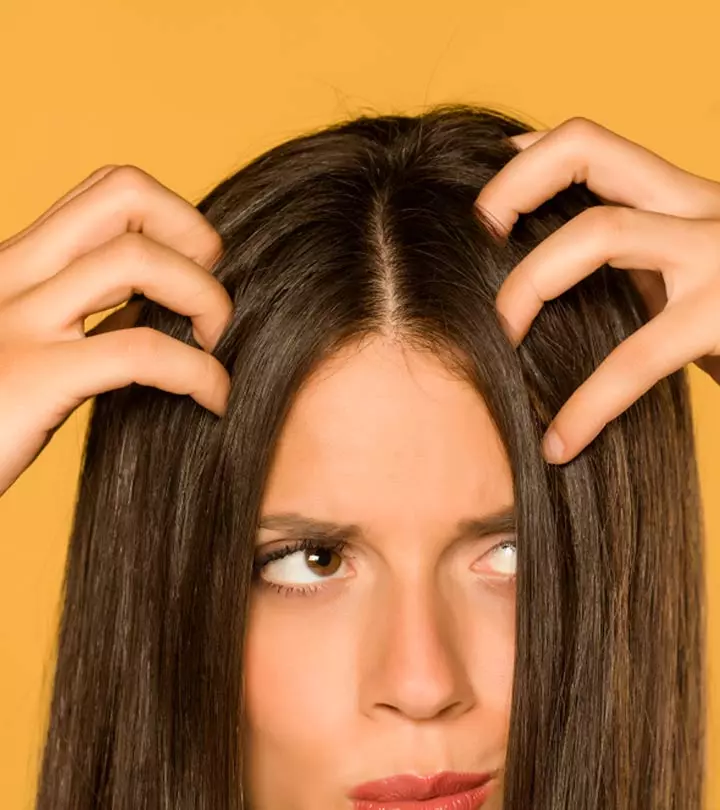
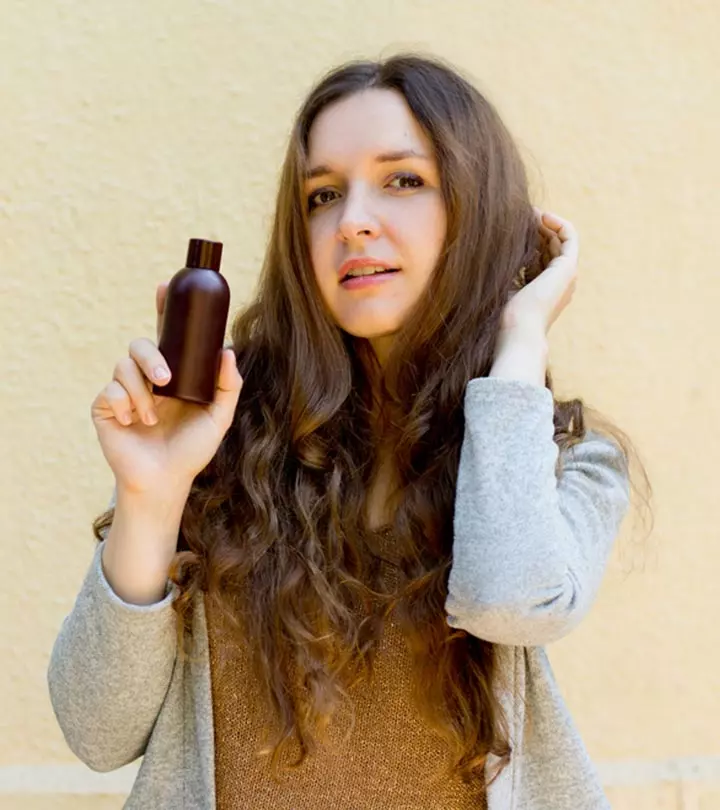

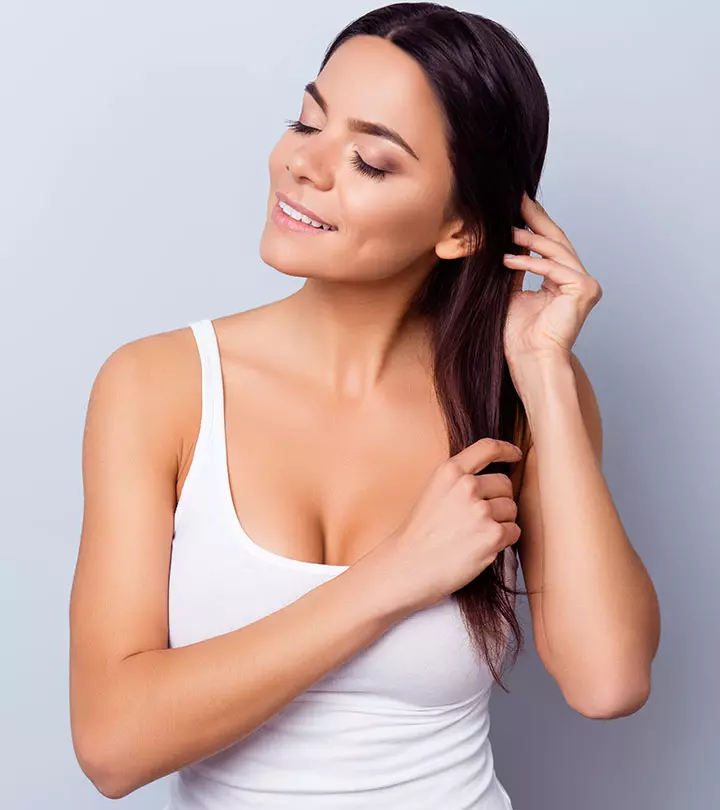
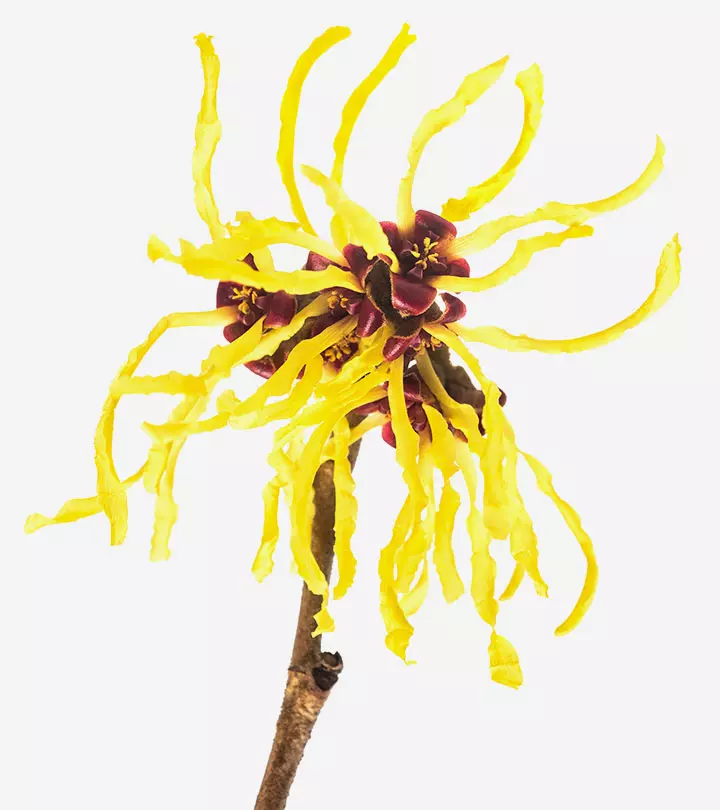



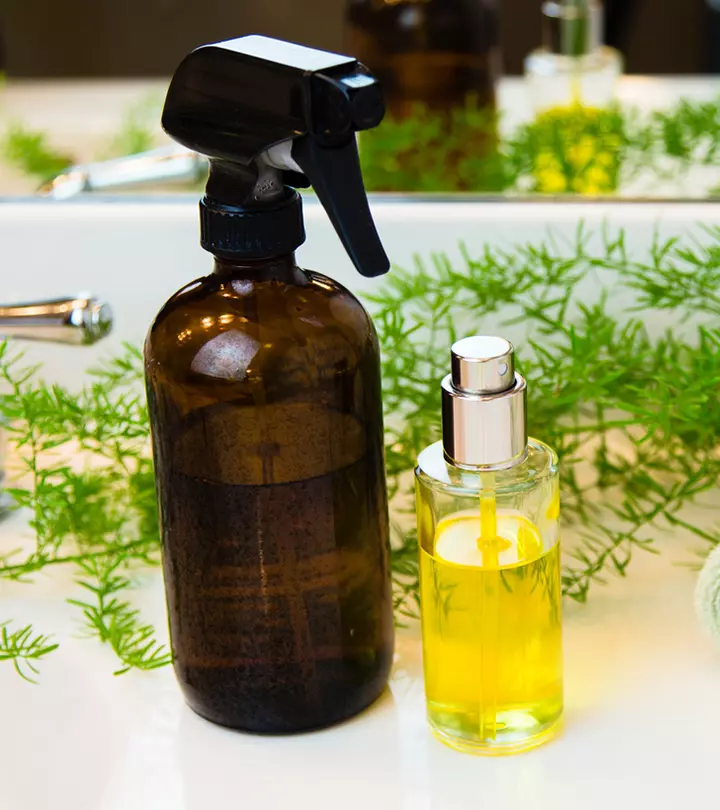
Community Experiences
Join the conversation and become a part of our empowering community! Share your stories, experiences, and insights to connect with other beauty, lifestyle, and health enthusiasts.